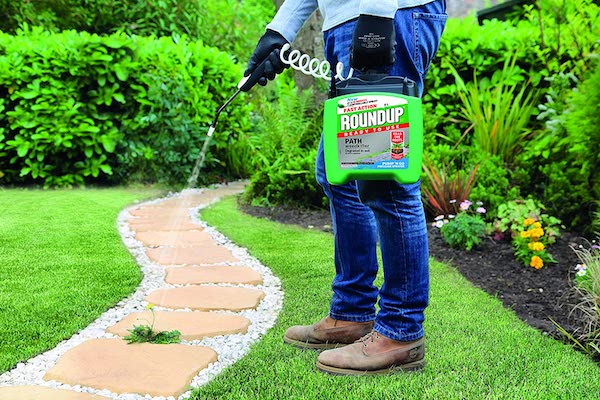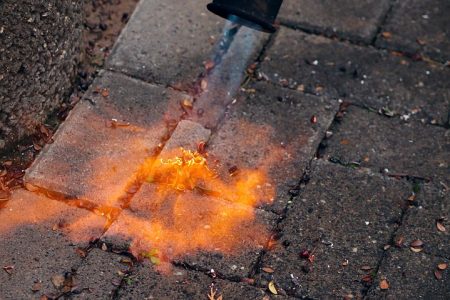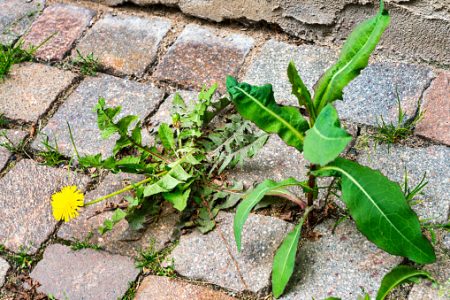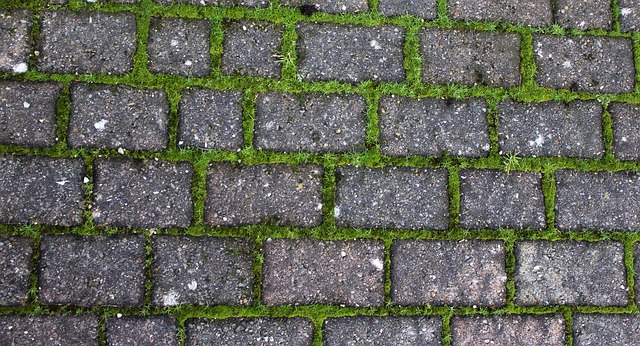Nothing spoils the look of your patio or driveway more than weeds and moss growing through the gaps. If left to get out of control, they can actually misplace some of your stones, and while it might only be slightly, it can still spoil the overall look of your carefully planned and laid paving stones.
With this in mind, you should really try to get rid of those weeds, moss, etc. as soon as possible and do what you can to prevent them coming back and making a nuisance of themselves.
Apart from pulling the weeds out by hand, which is a slow, tedious, and tiring job, options exist for weeding block paving that are both inexpensive and quite effective. This article will inform you of some of the best tried and tested methods out there that will be of interest to you if you’re wondering how to weed block paving.
How to weed block paving with salt
A simple salt solution is all that is needed to start fighting your weed problem, and making it couldn’t be easier. All you need to do is mix one part water with three parts salt and you have your solution. You can also use baking soda in place of the salt.
Once you have your solution mixed, just pour it into the cracks between the stones, directly onto the weeds and wait for the weeds to die. You have to be careful not to let the solution get on any of your other plants or they will surely die too.
If there are periods of heavy rain, it will wash away the salt and you’ll probably need to put some more down. Even with normal weather conditions, you are advised to apply some more solution after 4-6 months.
If your first solution doesn’t do the job, make another batch with a higher salt content and try again.
How to weed block paving with vinegar
Working in much the same way as the salt solution: it dries out weeds and kills them. It is inexpensive and easy to find in any supermarket, and will start working faster than the salt and water solution we just talked about.
Different vinegars have different concentrations of acid in them, so some will require less watering down than others. Again, be careful with this stuff or it will kill your plants as well as the weeds in your paving stones. Just pour it onto the leaves of the weeds directly and they will soon be a thing of the past.
Although I’ve personally never tried it, I’ve heard mixing salt, vinegar, and a little washing up liquid can really help to speed things up.
How to weed block paving with bleach
Similar to our last two methods, this one involves mixing a solution that is one part bleach to four or five parts water. Doing this will give you a very strong weed killer that works wonders on moss and algae. This solution can be poured all over the paving stone area and then left for about a quarter of an hour before scrubbing with a broom or brush.
Your paving stones will look brand new after this treatment, but it might damage the colour of the stones if used too often, and it can’t really be used for certain types of stones that are more delicate.
How to weed block paving with weed killers
Of course, you can always apply weed killer onto your patio or driveway to get rid of those weeds, but there are many different varieties of weed killer available these days. Systemic weed killers are a great tool against weeds, but because of the way they work it can take over a week to see results. They also suffer from the same weakness that the salt and vinegar methods suffer from: they can be washed away in the rain and you’ll have to start again.

Another type you will come across is known as residual weed killer. This stuff is spread in an area and prevents weeds from coming back to the surface for as long as it is there. The downside to this, is that it is easy to transfer this from the applied area to another area of your garden by accident, such as on the bottom of your foot, and then accidentally kill some of your favourite plants or damage your grass. Just remember to use a pet friendly weed killer if you have them.
Strong weed killer
Contact weed killers, like glyphosate based ones, aren’t really effective at killing off the roots of the weeds, but will get rid of them temporarily. On the plus side, they won’t poison your soil like some of the other types so pick the strongest weed killer that you can find on the link provided.
How to weed block paving with a weed burner
A relatively new method is to use a weed burner. These can be bought as either a gas fuelled or electric powered version, with the former being the most effective. They are basically a long rod with a burner at the end, and are probably your best choice if you are worried about using chemical solutions that might affect the rest of your garden.
 Weed burners, also known as weed wands, won’t get rid of the weeds forever, but they do give you a more environmentally friendly way of dealing with weeds in your paving stones.
Weed burners, also known as weed wands, won’t get rid of the weeds forever, but they do give you a more environmentally friendly way of dealing with weeds in your paving stones.
How to weed block paving with a pressure washer
This method is super easy, but if you don’t already own a cordless pressure washer or petrol pressure washer, it can be expensive to buy one for the sake of blasting weeds away. Using a pressure washer to get rid of weeds from your paving stones is quick but it is very messy, and you’ll have to spend time cleaning up afterwards.
Another problem with this method is that it won’t stop the weeds from coming back and might even make the seeds get down deeper in the soil and make things worse in the long run. Still, for a quick solution, it’s very handy.
How to weed block paving and not have the weeds come back
This way of getting rid of weeds so that they don’t come back is a combination of methods.

First, you need to get rid of the existing weeds using either weed killer or one of the other solutions we mentioned in this article. For best results, use a weed killer that will get down to the roots, even if you have to wait a week or so for it to take effect.
Best moss killer
After the weeds have gone, use a pressure washer and blast out the cracks between the paving stones to clear out any remaining weeds, moss and other debris that may have settled in there. You want the gaps between the paving stones to be as cleared out as possible, ready for the next step.
Once the paving stone joints have all dried out, check the weather forecast for a couple of days without expected rain, then fill the gaps in the stones with joining sand, being careful not to put too much sand in: it should be lower than the height of the stones themselves.
Now take a good quality patio sealant and apply a little with a brush to a small part of the intended area of use and then wait for a few hours to see if it has any negative effect on the stones.
If all is good, you can apply the patio sealant all over your patio or driveway paving stones using a sprayer, brush, or sponge mop, and then give it 15 minutes before applying a second coat. It’s important that you don’t let the first coat fully dry up before you add the second one: wet on wet is what you are after.
With any of the above methods we strongly advise using protective clothing such as gloves, eye protectors, and a mask. Being safe is being smart.
